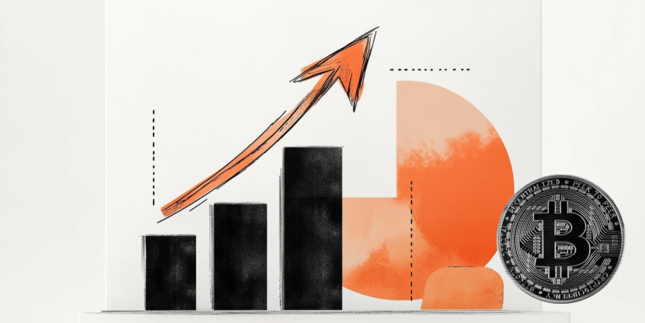The “ King Dollar” is back in the spotlight, bolstered by a sharp uptick in the ISM services prices paid sub-index for December, sparking whispers of renewed inflation fears. This data point could pivot the Federal Reserve’s gaze onto inflation, fueling another leg up for the greenback amidst higher Treasury yields.
Today's financial stage is set for more economic drama ahead of Friday’s NFP print. The release of the FOMC minutes, the ADP payroll data, and a keenly anticipated speech by Fed Governor Chris Waller, who can always influence the rate discourse, are poised to send ripples through the currency markets. Investors are bracing for these events, ready to decode any signals on the Fed's next moves in this high-stakes monetary chess game.
Unless the next run of data, more so the Non-Farm Payroll print, produces significant clunkers, traders anticipate that the Federal Reserve will continue to err on the cautious side. This prudence is partly influenced by policy uncertainties from the new U.S. administration and the most recent economic indicators, which have surpassed expectations, suggesting a more robust economic landscape than previously thought. This complex backdrop may prompt the Fed to take a measured approach to its upcoming decisions.
The tariff dilemma remains a pivotal topic among FX traders as they navigate the uncertainties surrounding President-elect Trump's potential for imposing heavy-handed tariffs. Amidst rampant speculation, these tariff concerns have momentarily receded, overshadowed by pressing macroeconomic factors currently steering market dynamics. Nevertheless, uncertainty persists and, to a degree, influences trading strategies. The Washington Post report caused the recent tariff stir—quickly refuted by Trump—hinting that the anticipated U.S. tariffs might target only selected products. While this report was dismissed, it momentarily shifted market perceptions, suggesting a milder tariff approach that could reverse the dollar's rise. This fleeting sentiment shift highlights the delicate balance traders must maintain in response to evolving news. Without the WaPo headlines, the dollar would surge past 110 on the DXY.
The Euro
The markets have largely dismissed the higher inflation in Europe, attributing it to base effects that are already factored into models. As a result, rate markets are still anticipating four ECB .25 % rate cuts this year, reflecting a broad consensus to overlook these inflation figures. However, market participants will not ignore the rising energy prices in Europe. This surge in energy costs is becoming a significant stagflation concern. It presents a complex challenge for traders as they assess the potential impact on currency fair values and monetary policy.
Energy market tremors are rippling through Europe as winter deepens, heightening concerns over energy supplies following the closure of a Soviet-era pipeline that once ferried Russian gas to Europe via Ukraine. The shuttering of this key conduit, upon the expiration of a five-year transit agreement, leaves many European countries scrambling for alternative energy sources like LNG imports. This supply shift comes just as natural gas prices in Europe soar to peaks not seen since the autumn of 2023, registering a staggering 105% increase from last year's lows in February. This surge poses a severe challenge to the inflation landscape across the eurozone, threatening to escalate costs and economic strain as countries grapple with this new stagflation reality.
View:
The technical setup for staying short on EURUSD may not be the most appealing right now. Still, the overarching narrative of Trump’s protectionist policies could be the game-changer that drives the pair toward parity.
The Yuan
The CNY continues its downtrend as investors brace for a rapid tariff escalation after the January 20th inauguration. Amid these tensions, Chinese authorities have ramped up their efforts to curb further depreciation. Today's PBoC USD/CNY fixing was notably more potent than Reuters daily estimate, marking the widest divergence since last April.
The People's Bank of China (PBoC) is strategically tightening offshore CNH liquidity, keeping short Yuan swap rates high. Today, the overnight rate remains elevated at 7.82%, albeit slightly reduced from 8.1% the previous day. This move makes it more expensive and less attractive for fast money traders to short the Yuan. Consequently, traders are shifting their focus and looking for opportunities to short other Asian currencies, navigating the tighter controls imposed by the PBoC.
View:
If President Trump fully enforces tariffs, the USDCNH will likely breach the 7.60 level.
SPI Asset Management provides forex, commodities, and global indices analysis, in a timely and accurate fashion on major economic trends, technical analysis, and worldwide events that impact different asset classes and investors.
Our publications are for general information purposes only. It is not investment advice or a solicitation to buy or sell securities.
Opinions are the authors — not necessarily SPI Asset Management its officers or directors. Leveraged trading is high risk and not suitable for all. Losses can exceed investments.
Recommended Content
Editors’ Picks

Gold nears $3,400; fresh record highs and counting amid USD sell-off
Gold price closes in on $3,400 as the record rally regains strength on Easter Monday. Concerns over US-China trade war escalation and the Fed’s independence smash the US Dollar to three-year troughs. RSI stays overbought on the daily chart, with thin volumes likely to exaggerate moves in Gold price.

EUR/USD trades with sizeable gains above 1.1500, at over three-year highs
EUR/USD trades over 1% higher so far this Monday as the relentless selling interest in the US Dollar keeps it well above the 1.1500 threshold - the highest level since November 2021. Growing concerns over a US economic recession and the Federal Reserve’s autonomy continue to exert downward pressure on the USD.

GBP/USD stays strongly bid near 1.3400 on intense US Dollar weakness
GBP/USD continues its winning streak that began on April 8, trading close to 1.3400 in early Europe on Monday. The extended US Dollar weakness, amid US-Sino trade war-led recession fears and heightened threat to the Fed's independence, continue to underpin the pair. Thin trading is set to extend.

How to make sense of crypto recovery – Is it a buy or fakeout
Bitcoin (BTC), Ethereum (ETH) and XRP, the top three cryptocurrencies by market capitalization, extend their last week’s recovery on Monday, even as trader sentiment is hurt by the US President Donald Trump’s tariff policy and announcements.

Five fundamentals for the week: Traders confront the trade war, important surveys, key Fed speech Premium
Will the US strike a trade deal with Japan? That would be positive progress. However, recent developments are not that positive, and there's only one certainty: headlines will dominate markets. Fresh US economic data is also of interest.

The Best brokers to trade EUR/USD
SPONSORED Discover the top brokers for trading EUR/USD in 2025. Our list features brokers with competitive spreads, fast execution, and powerful platforms. Whether you're a beginner or an expert, find the right partner to navigate the dynamic Forex market.